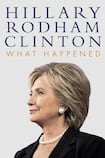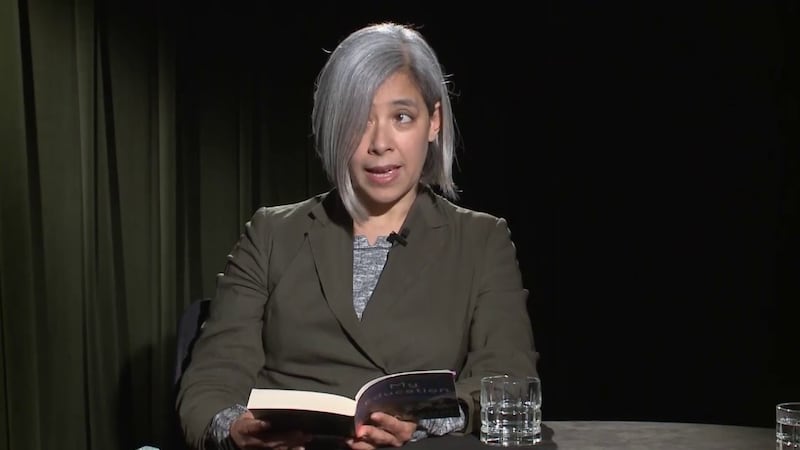
Never write from anger. It is simple but sound advice. You make statements you might regret or share thoughts that might benefit from calmer reflection. Or worse still, you might be wrong.
In the months since Hillary Rodham Clinton lost the White House to Donald Trump, the Democrat has poured her thoughts and considerable ire into a book running to almost 500 pages that tries to explain “What Happened”. The candidate should have been less definitive in her synopsis, perhaps adding a question mark to the title because it is clear she does not know. To be fair, Clinton admits to her own mistakes but there is plenty of blame to be shared: for Russia, Wikileaks, former FBI director James Comey, Barack Obama, Joe Biden and her primary nemesis Bernie Sanders.
Post-defeat, Clinton is still in those early stages of grief. Acceptance is still some distance away. As one senior Democrat, who is close to Clinton, told me recently: “I don’t think she will ever get over it.”
'Breathe now, scream later'
Certainly her candid accounts of how she dealt with the pain of the loss – walks in the woods near home, “my fair share of Chardonnay” and only wanting to “scream into a pillow” – show that she is struggling to understand her defeat. They make this a compelling post mortem even if it is an exercise in catharsis for the deeply wounded Clinton. “Breathe now, scream later,” she writes of the morning she attended Trump’s inauguration. Then there are the behind-the-scenes campaign details that are just remarkable; Clinton spent 600 hours of the campaign – “or 25 days!” – having her hair and make-up done. “I was so shocked, I checked the math twice,” she says.
This memoir could have had draft working titles such as “How An FBI Director Cost Me The Presidency (Despite Winning the Popular Vote)”. Clinton saves most of her rage for the former FBI man. In her eyes, Comey inflicted the fatal wound. She was “shivved” by him three times in the final months, she says. She makes the point, repeatedly, that his late intervention – reopening the FBI investigation into her use of a private email as US secretary of state – turned enough voters off her and handed Trump the presidency (despite her securing almost three million more votes).
But the race – and Clinton admits this – was already very close by the time Comey put his thumb on the scale. This speaks volumes about her popularity. Facing a misogynistic reality TV star who bragged about sexually assaulting women, peddled racist theories about a president and debased discourse with a boorishness and demagoguery not witnessed in modern US politics, she still lost.
Leaving Donald Trump aside, Hillary Clinton was the wrong candidate running at the wrong time for a party seeking a third consecutive term. As she says herself, “I have been unable to connect with the deep anger so many Americans felt or shake the perception that I was the candidate of the status quo”. She was not liked by many, not good at politics and, most critically, not the “change candidate” that many craved. The book addresses these issues but downplays them in her hierarchy of blame. She returns again and again to point out the influence that Comey, the Russian hacking of her campaign emails and the dissemination of fake news had in Trump’s victory.
She does acknowledge, albeit late in the book, that there was “a fundamental mismatch between how I approached politics and what a lot of the country wanted to hear in 2016”.
Millions and millions of people decided that they just didn't like me. Imagine what that feels like. It hurts.
“When people are angry and looking for someone to blame, they don’t want to hear your 10-point plan to create jobs and raise wages. They want you to be angry, too,” she writes.
She touches briefly on that difficult issue of her popularity: “I have come to terms with the fact that a lot of people – millions and millions of people – decided that they just didn’t like me. Imagine what that feels like. It hurts.”
Lack of enthusiasm
Having spent more than a year on the road covering the US presidential election for The Irish Times and witnessing Clinton in action at rallies – from her early listening-tour stops in New Hampshire to her mass rallies in places as far apart as Iowa, North Carolina and Florida – I was struck by how controlled and staid her performances were and the lack of enthusiasm among her supporters.
In contrast, Trump and Sanders, a US senator for Vermont, her challenger for the Democratic nomination, electrified their audiences with bold promises, despite how outrageous and unrealistic some were. Both proposed simpler ideas to complex problems that could be covered in an effective bumper-sticker slogan. Clinton offered a laundry list of policies. “The piece that perhaps I undervalued is that, from this perspective, the details of the plan may matter less than how it’s framed and sold to the public,” she writes. Perhaps?! It is a stunning statement from a second-time candidate.
But even this self-confessed policy wonk focused less and less on her proposals in the latter stages of the campaign. She admits that she saw more points to be scored by presenting Trump to the public as too great a risk in a bid to offset the widespread desire for change amongst the public. Her campaign, in its final weeks, became less about what Clinton was for than who she was against. It backfired; America was willing to take the risk in pursuit of change.
She fails to address her biggest gaffe of the campaign – her branding of half of Trump’s supporters as a “basket of deplorables” – until late in the book, page 413. She expresses regret for handing her rival “a political gift” but, like her remark that she would “put a lot of coal miners out of jobs” which played so badly across the Rust Belt, she tries to claim that her comments were taken out of context.
Some of her supporters may lament that the post-election Hillary “now I’m letting my guard down” Clinton that appears in this book did not materialise before the election.
Stepping outside the data-driven, poll-tested confines of her rigid, lackluster campaign might have addressed the authenticity, trust and honesty issues that shadowed her like a dark cloud. Take, for example, her fiery inner-monologue while Trump loomed behind her during the second debate two days after he was heard bragging about groping women. “Back up, you creep, get away from me, I know you love to intimidate women but you can’t intimidate me, so back up,” she writes.
White women
Had she displayed even something of this spirit – or even more of the sharp wit and acerbity that fills this book – Clinton might have won her over some new supporters. That she could not even win a majority of white women last November shows how she failed to convince a constituency that should have been at the core of her support, people who might have responded to a more freewheeling Clinton that ran counter to her instincts honed from decades of self-control.
The election defeat is clearly still too raw for Clinton for this book to be anything more than a self-serving apoplectic rant at times, though it is a revealing, well-written account of a flawed candidate desperately attempting to spread the cause of her defeat beyond her own door.
To understand what really happened in the 2016 election, readers must look elsewhere.
Simon Carswell was Washington Correspondent of “The Irish Times” from 2013 to 2017















